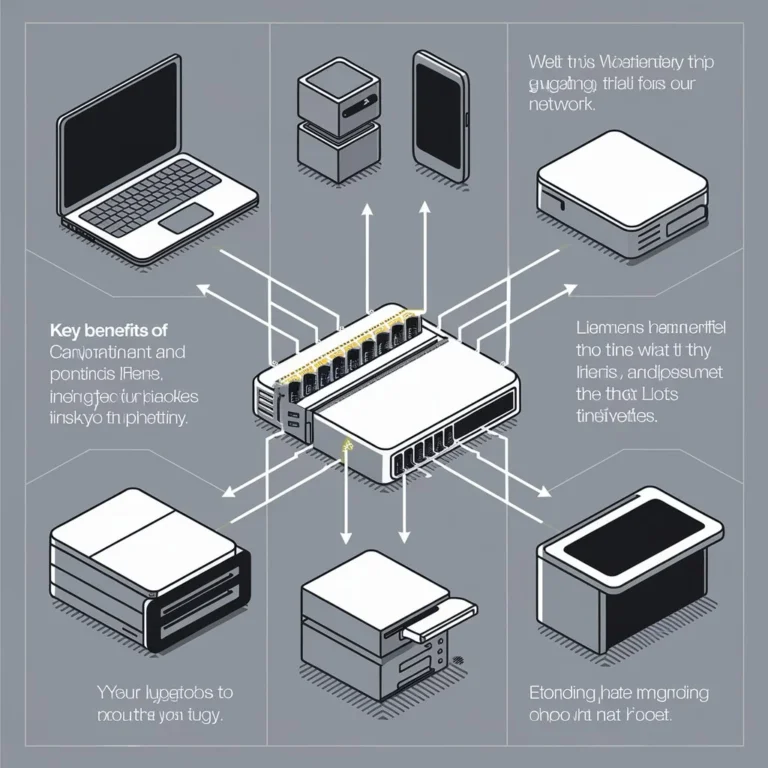Internet traffic is always on the rise. This means network engineers and centers must work around the clock to meet the rising demand for faster connectivity. If you have a large campus switch for network, you’re looking for ways to address evolving needs for bandwidth, particularly in limited spaces.
The Visual Network Index from a couple of years back shows the exponential rise in traffic. Some ISPs and leading names in the networking sector are determined to resolve these challenges by introducing various network upgrades that support the surge in video streaming and mobile devices.
The campus switch is one of these network upgrades. This post will dive into five vital benefits you can expect in your network if you upgrade to a campus switch.
Campus Switch: What is it?
A campus switch or campus network switch is a device built to connect several devices within a large-scale enterprise or campus setting. It plays the crucial role of the central hub during data transfer, ensuring smooth and uninterrupted communication between printers, computers, access points, servers, and other network-enabled hardware.
A campus switch employs advanced switching technology to maintain efficient data transmission while effectively managing network bandwidth.
Key features a campus switch possesses include:
- Quality of service (QoS)
- Port density
- VLAN support
- Power over Ethernet (PoE)
- High availability and redundancy
Having covered these basics, let’s explore the benefits that make a strong case for why you need to upgrade your network with one of these devices.
1. Seamless Network Management
Operational and management complexity is typically the outcome of an increasing number of connected devices. It is necessary to address the disparities between wired and wireless networks so as to improve user experience, overall agility, and operational efficiency.
Also, operations must be automated, and programmability investigated. A campus switch upgrade can assist in simplifying the management of merging wired and wireless access. Additionally, this upgrade can provide Software Defined Network (SDN) compatibility and automation capabilities to promote simplicity, corporate agility, and lower TCO.
Must Read: Fintechzoom – Stay ahead with the latest fintech innovations today
In other words, campus switches frequently come with features and management tools that make network administration easier. These solutions simplify and increase the overall effectiveness of network management by offering centralized control, surveillance, and configuration features.
2. Superior User Experience and Network Performance
You need stronger PoE/PoE+ density access switches if you intend to introduce location-based access, which needs one AP per 1,000 square feet for location accuracy, or if you intend to install more wireless access points to boost reach and density for a better user experience. The campus switch meets these demands perfectly.
Upgrading to the right campus switch offers you enhanced RF Excellence functions like CleanAir for managing RF interference and ClientLink for better coverage and performance, as well as increased PoE+/UPOE density. Your users have better connectivity, and you can open up new prospects by turning on location services.
Overall, campus switches ensure maximum performance for mission-critical applications and services by enabling high-speed and low-latency data transmission through their sophisticated switching capabilities.
3. More Flexible and Scalable
Why does the network always seem to be the problem? It is common for users and other IT managers to attribute a distinct technical issue to the network. However, you won’t have to worry about these occurrences when you have a dependable campus switch.
Their architecture allows them to meet the increasing demands of growing networks. They make it simple to scale by adding more switches or ports to accommodate changing network needs.
Also Read: Exploring Fintechzoom MULN Stock: Opportunities and Risks Ahead
4. Scaleup Connectivity to Gigabit Wireless
Gigabit wireless, or 802.11ac, is a new wireless technology for handheld gadgets. The majority of mobile devices since 2014 now feature 802.11ac; the earliest examples were seen in the Samsung Galaxy S4 and HTC One at the time they launched. Thanks to this innovation in wireless connectivity, mobile phones, tablets, and other gadgets now require three times as much bandwidth on campus and branch infrastructure as they did previously.
Given that traffic is expected to increase again over the next five years, current wired and wireless networks will soon become saturated. With an upgrade to a campus switch, you may deploy a wireless network to meet 802.11ac and other emerging access points (which also function with earlier clients), backbone switches with 10/40/100G capacity, and access switches featuring a higher 10G density and scale.
5. Better Network Security
Campus switches give administrators the ability to regulate access to network assets, implement security policies, and protect sensitive data by offering capabilities like VLANs, port security, and access control lists.
These features are already in use by numerous organizations. Operators who choose to disregard these quickly evolving technological trends risk serious consequences. Remember, rolling out new features takes time. Therefore, you want to take action for your network before it’s too late.
Conclusion
Though you may not think much about upgrading your network with a campus switch, there are several reasonable benefits to making this decision.
When you consider wireless networking like campus networks, with more hardware connected to the network and its associated higher bandwidth, a campus switch is an ideal option. It’s also the modern option. For those using the old system, making the switch is easy, safe, convenient, and, most importantly, affordable, especially in the long run.
Do you know any other benefits the campus switch offers your network? Let us know in the comments below.
